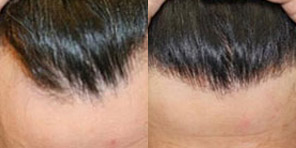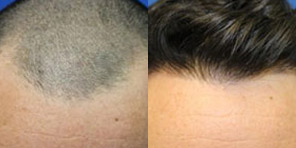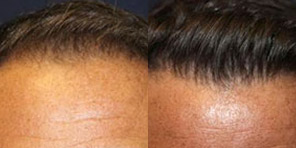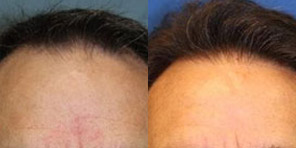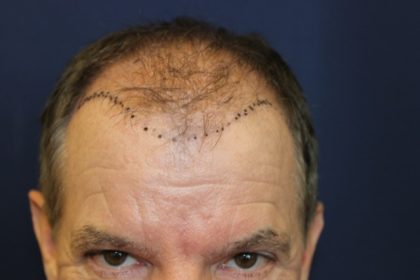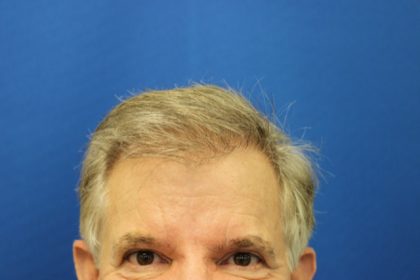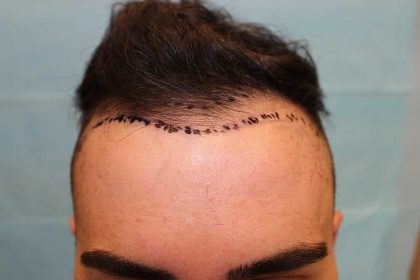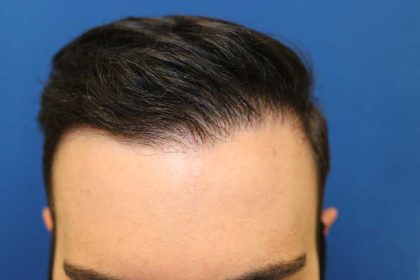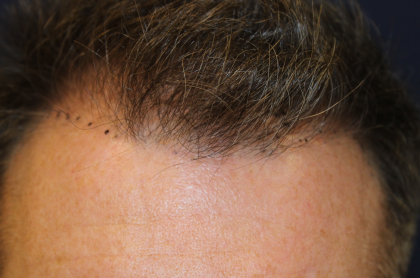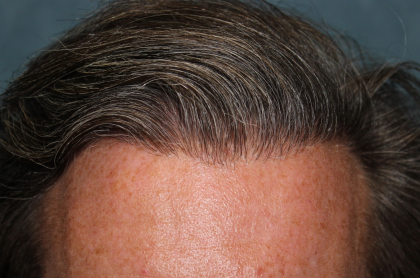Understanding Hair Loss

Understanding hair loss won’t make the condition less distressing, but it can help you to find solutions and take control of your hair loss. The hair loss experts at California Hair MD can help you understand why you’re losing hair and how you can treat it. Contact us to schedule a complimentary consultation.
Contents
What Is Hair?
Hair is made of keratin, a protein that is produced in hair follicles under the skin. As your hair follicles produce new hair cells, old ones are pushed out, causing the hair to grow. Your hair growth patterns will change throughout your life. Generally, as people age, hair growth slows.
The Hair Growth Cycle
Your hair is constantly growing. Hair typically grows at a rate of about six inches per year, but this can vary. Each hair follicle on your head and body goes through its own life cycle. Hair cycles through patterns of growth, rest, and shedding.
- Anagen – This is the active phase of hair growth. Most hair on the head is in the anagen phase (up to 90%).
- Catagen – This is a transitional phase in the hair growth cycle and lasts 1-2 weeks.
- Telogen – The telogen phase of hair growth is the resting phase. This phase can last for a few months and at the end, hair will fall out before reentering the anagen or growth phase.
Hair is constantly cycling through these phases of hair growth. Hair loss occurs when patients lose more hair than is sustainable or when hair doesn’t cycle through these phases as expected.
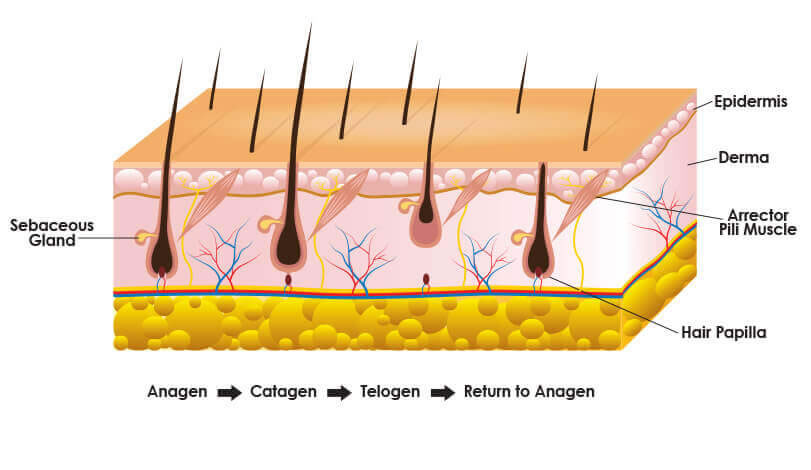
Hair Loss in Men – Male Pattern Baldness
Male pattern baldness is one of the most common causes of hair loss. This type of hair loss causes a very noticeable and traditional hair loss pattern with thinning that begins at the temples and progresses to significant baldness on the top of the head. Hair around the sides and back of the head are not typically impacted by male pattern baldness.
Male pattern baldness has both genetic and hormonal roots. Your genes cause some hairs on the head to be sensitive to a hormone called DHT. High levels of DHT and DHT sensitivity can change the hair growth cycle, causing hair to cycle through the phases more rapidly and slowing the rate at which new hairs grow. It can also shrink hair follicles causing hair to become thinner and more brittle.
While male pattern baldness is the most common type of hair loss in men, other types of hair loss can occur including hair loss caused by medications, medical conditions, and diet.
Hair Loss in Women
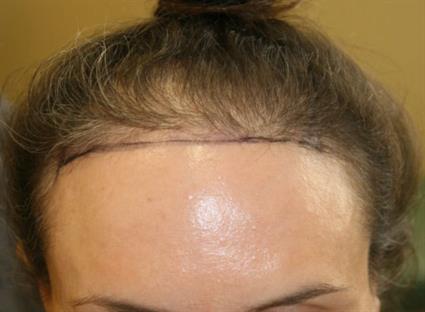
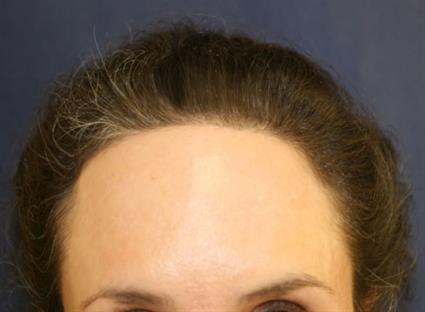
Hair loss in women is often more complex than hair loss in men. It can be caused by a variety of factors from genetics to medications and medical conditions. While hair loss in women isn’t talked about as often as hair loss in men, it is quite common, especially in post-menopausal women. It is estimated that more than 50% of women over 50 experience some degree of hair loss.
In women, hair loss tends to take on a different pattern than in men. The first signs of hair loss in women often start at the part. The part often becomes wider. Hair loss in women is more diffuse than in men and can be more difficult to treat.
Signs of Hair Loss
Hair loss often happens subtly. Small changes in the quantity or thickness of your hair may go unnoticed until significant hair loss has occurred. Typically, by the time patients begin to notice hair loss, they’ve lost 50% or more of their natural hair volume.
If you start to notice changes in your hairline or notice you’re losing hair than usual, see a hair restoration specialist as soon as possible. Hair loss treatments work best when they are started early. However, there are treatment options available for patients even with advanced hair loss.
Treatment Options
Hair loss is treatable. At California Hair MD, we understand that hair loss is complex. Our unique treatment center was created to address the complexities of hair loss by providing comprehensive treatment options.
As one of the only hair loss centers in the U.S. run by a dermatologist and plastic surgeon, we can provide our patients with more treatment options and medical expertise than other hair restoration centers. Our team dynamic ensures that patients receive treatments that will be effective for addressing their hair loss, no matter its cause.
Medical Treatments
Non-surgical treatments for hair loss can be very effective, especially in the early stages of hair loss. Medical treatments can also be effective for maintaining and extending the results of surgical hair restoration options.
Finasteride
Finasteride is a medication to treat hair loss in men. It blocks the body from producing DHT and can slow or stop male pattern baldness. Finasteride is an oral medication that is taken daily at home.
Minoxidil
Minoxidil is often applied topically to areas experiencing hair loss. It is used by both men and women.
Scalp micropigmentation can hide the appearance of hair loss by camouflaging the scalp. Using a process like tattooing, this treatment adds pigment to the scalp to hide hair loss.
Surgical Treatments
Hair transplantation is often recommended for patients with moderate or advanced hair loss. It provides a permanent and lasting solution to hair loss.
FUT or the linear strip method is a type of hair transplantation. Hair-bearing skin is removed from the back of the head, divided into hair follicles, and transplanted into areas that need more hair. FUT enables the rapid harvesting of many grafts.
FUE is less invasive than FUT and does not leave a long, linear scar at the back of the head. With FUE, individual hair follicles are extracted and transplanted. With FUE, patients can enjoy hair restoration with minimal downtime and no scarring.
NeoGraft is a semi-automated system for FUE. The NeoGraft system aids in the extraction, storage, and implantation of hair follicles. NeoGraft helps to reduce hair follicle loss while creating natural-looking hair restoration results.
SmartGraft is a state-of-the-art hair restoration system that uses advanced technology to find and optimize hair grafts. SmartGraft is minimally invasive for reduced downtime and superior results.
ARTAS robotic hair restoration uses advanced FUE techniques and artificial intelligence to create natural-looking hair restoration results. The robotic arm aids in precision extraction and placement of hair follicles.
Before and After Photos
Learn More About Hair Loss and Hair Loss Solutions at California Hair MD
Hair loss is an individualized condition that needs personalized treatment options. Learn more about your hair loss at a complimentary consultation with the hair restoration experts at California Hair MD. Contact us today.

